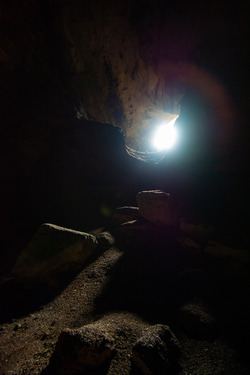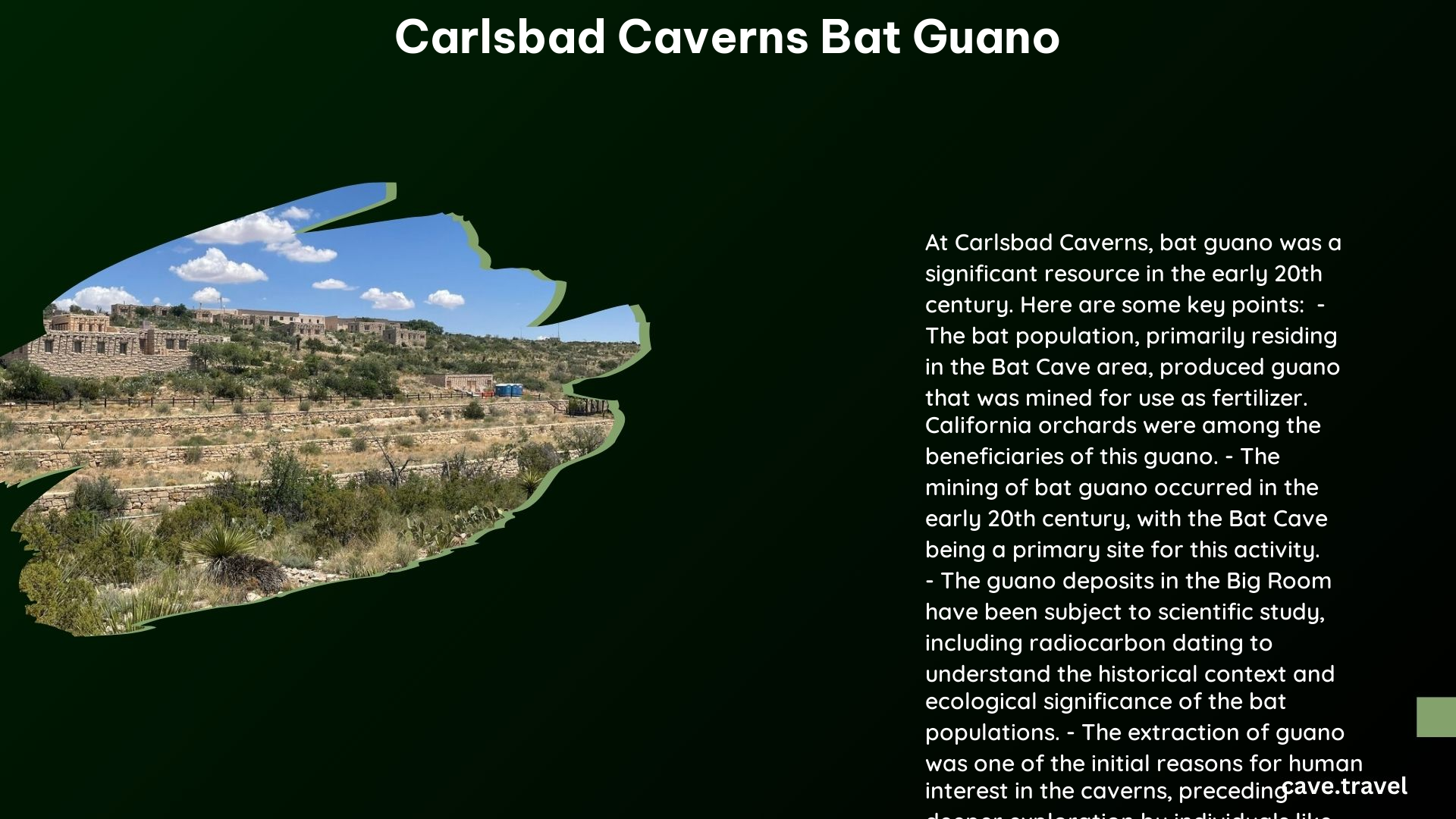Carlsbad Caverns bat guano is a remarkable natural resource with a rich history and significant ecological importance. This nutrient-rich substance, produced by the cave’s vast bat population, has played a crucial role in both human activities and the cave’s ecosystem. From its historical mining for fertilizer to its current status as a protected part of the cave’s ecology, Carlsbad Caverns bat guano offers fascinating insights into the interplay between nature and human intervention.
What is the Historical Significance of Bat Guano Mining in Carlsbad Caverns?

The mining of bat guano in Carlsbad Caverns dates back to the early 20th century. This activity was driven by the high demand for natural fertilizers in agriculture. The guano deposits, particularly rich in nitrogen and phosphorus, were highly valued for their ability to enhance soil fertility.
Key aspects of the historical guano mining in Carlsbad Caverns include:
- Mining primarily occurred in areas like Bat Cave and the pit below the entrance
- Miners encountered guano layers up to 30 feet deep in some locations
- The mining process was labor-intensive, involving manual collection and simple tools
- Guano extraction was a significant economic activity in the region during this period
How Was Bat Guano Harvested in Carlsbad Caverns?

The harvesting methods for bat guano in Carlsbad Caverns were primarily manual and rudimentary:
- Manual Collection: Miners would physically scoop guano from cave floors
- Simple Tools: Basic implements were used to gather and transport the guano
- Extraction Routes: Miners developed pathways to remove the guano from deep within the caves
- Transportation: Once collected, the guano was transported out of the cave for processing and distribution
This manual harvesting had significant impacts on the cave environment, often disturbing the natural balance of the ecosystem.
What is the Nutrient Composition of Carlsbad Caverns Bat Guano?
While specific data for Carlsbad Caverns bat guano is not available, bat guano generally has a high nutrient content:
| Nutrient | Typical Content |
|---|---|
| Nitrogen | Up to 10% |
| Phosphorus | Up to 3% |
| Potassium | Variable |
| Micronutrients | Present |
The exact composition can vary based on the bats’ diet and environmental factors. The high nitrogen and phosphorus content makes bat guano particularly valuable as a fertilizer.
How Does Bat Guano Impact the Carlsbad Caverns Ecosystem?
Bat guano plays a vital role in the Carlsbad Caverns ecosystem:
- Nutrient Source: It provides essential nutrients for cave-dwelling organisms
- Biodiversity Support: The guano supports a diverse range of species, including unique fungi, bacteria, and invertebrates
- Food Web Foundation: Many cave-dwelling creatures rely on guano-based food chains
- Microbial Habitat: Guano hosts diverse microbial communities crucial for nutrient cycling
The presence of guano creates a unique ecosystem within the cave, supporting life forms that have adapted to this specific environment.
What is the Age of Bat Guano Deposits in Carlsbad Caverns?
Recent radiocarbon dating studies have provided insights into the age of guano deposits in Carlsbad Caverns:
- Age Range: Approximately 42,510 to 50,300 years before present
- Average Age: About 45,830 years before present
These findings indicate that bat activity and guano deposition in Carlsbad Caverns have been ongoing for tens of thousands of years, highlighting the long-term ecological significance of the cave system.
How Has the Perception of Bat Guano in Carlsbad Caverns Changed Over Time?
The perception and treatment of bat guano in Carlsbad Caverns have evolved significantly:
- Early 20th Century: Viewed primarily as an economic resource for fertilizer
- Mid-20th Century: Growing recognition of its ecological importance
- Late 20th Century: Shift towards conservation and protection of guano deposits
- Present Day: Valued as an integral part of the cave ecosystem and a subject of scientific study
This evolution reflects broader changes in environmental awareness and cave conservation practices.
What Scientific Research Has Been Conducted on Carlsbad Caverns Bat Guano?
Scientific research on Carlsbad Caverns bat guano has covered various aspects:
- Radiocarbon Dating: Studies to determine the age of guano deposits
- Ecological Studies: Research on the role of guano in cave ecosystems
- Microbial Analysis: Investigations into the microbial communities living in and around guano deposits
- Paleoclimate Research: Use of guano deposits to study historical climate patterns
- Nutrient Cycling: Studies on how guano contributes to nutrient cycles within the cave system
These research efforts have significantly enhanced our understanding of the cave’s ecology and history.
What Conservation Measures Protect Bat Guano in Carlsbad Caverns Today?
Current conservation measures for bat guano in Carlsbad Caverns include:
- Prohibition of Guano Mining: All commercial extraction of guano has been banned
- Visitor Restrictions: Limited access to sensitive areas with significant guano deposits
- Educational Programs: Efforts to inform visitors about the importance of guano to the cave ecosystem
- Monitoring Programs: Regular assessment of guano deposits and associated ecosystems
- Research Protocols: Strict guidelines for scientific studies to minimize disturbance
These measures aim to preserve the natural balance of the cave ecosystem while allowing for scientific study and controlled public access.
References:
– https://digitalcommons.usf.edu/cgi/viewcontent.cgi?article=1114&context=kip_data
– https://npshistory.com/publications/cave/index.htm
– https://www.rockngem.com/exploring-carlsbad-caverns/
